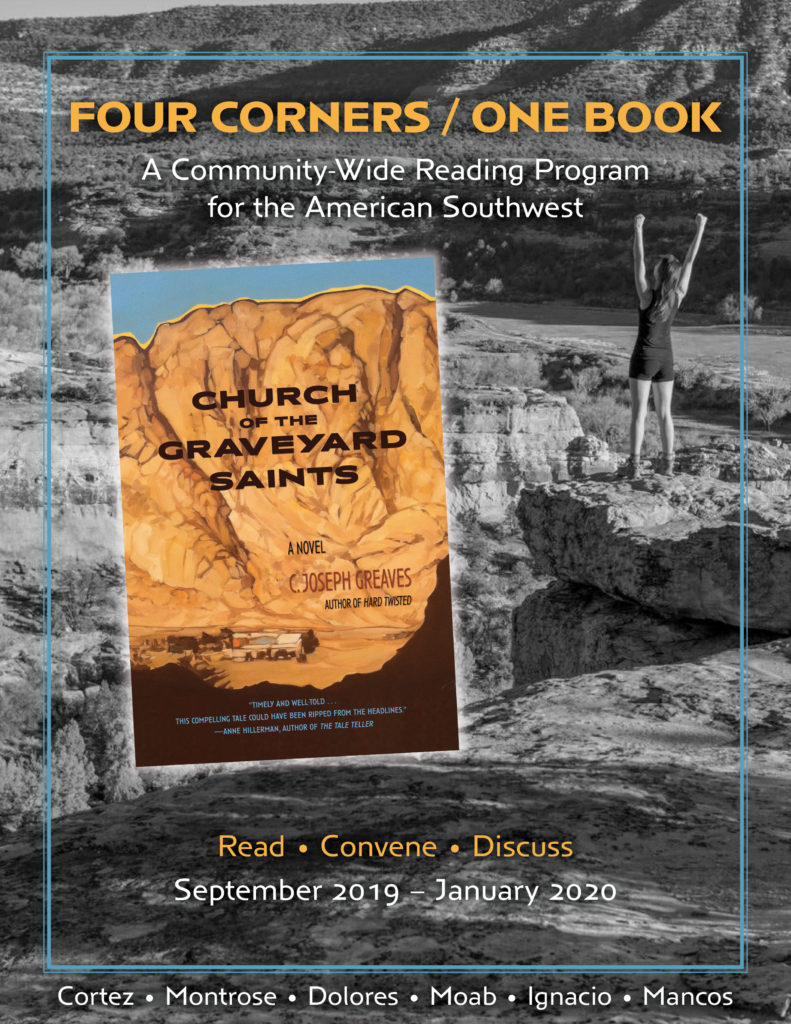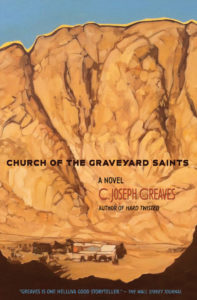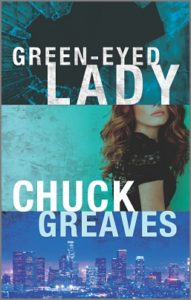Mancos, Colorado is about as far from Hollywood as you can get without a passport, and screenwriting gigs for 65-year-old novices are about as common as sled dogs on Sunset Boulevard. Yet October of 2020 somehow found me on a Mancos film set watching acclaimed television director Felix Alcalá (ER, Breaking Bad, The Good Wife, Madam Secretary, etc.) guide an ensemble cast of talented actors through a script I’d written for the pilot episode of Badwater, a dramatic television series I’d created and set in the fictional Four Corners town of Goodwater, Colorado.
If you’ve ever aspired to write for the screen, then the Badwater origin story might be of some interest to you – not as a “how-to” tutorial so much as a “why-the-heck-not?” inspirational yarn in which naïve perseverance confronts the gravitational forces of convention, and somehow manages to fly.
This particular story began in September of 2019, when Felix and I were introduced by a mutual friend, the painter and sculptor (and Cowgirl Hall of Fame member) Veryl Goodnight, at her Mancos art studio. Like me, Felix was a relative newcomer to the Four Corners region, prompting Veryl to exclaim, in that way she does, “Chuck’s a writer! And Felix is a director! You two should know each other!”
Over dinner the following week, Felix and I did get to know each other, sharing tales of triumph and tribulation in our respective creative spheres. He at the time had a project in development with a Hollywood production company, and the attendant bureaucracies were driving him to distraction. “I’ll end up owning ten percent of a show I no longer recognize,” he lamented, or words to that effect. We decided, by the time our check had arrived, both to work on something together and to do so in such a way as to retain creative control and ownership of the resulting product.
Fortunately for us, we had complementary skill sets. I was a versatile writer of both fiction (genre and literary) and nonfiction, and, as a retired lawyer, was undaunted by the complexities of the legal labyrinth we were about to enter, while Felix, a 40-year veteran of the entertainment industry, had the experience and connections needed to convert my ideas and words into celluloid.
We agreed on an overarching theme for whatever it was we were about to create; namely, that of moral ambiguity. As in, if fate placed you in an untenable position, how far would you go to extricate yourself, and would the means you were forced to employ justify the ends? So with that conceptual dilemma as my polestar, I set out to draft what’s called a “treatment,” or brief (in this case, 15-page) synopsis of the television series taking shape in my head, including its setting, its main characters, and its central conflicts. The treatment I wrote for Badwater also included a fairly detailed outline of the pilot episode, plus a “series bible” mapping out each of the first season’s six proposed episodes.
By spring of 2020 the global COVID-19 pandemic had arrived, which Felix and I viewed both as an obstacle and an opportunity, the latter because worldwide television production had effectively shut down, clearing the field for our little venture. Cast and crew that might not otherwise have been available to us suddenly were, and while New York and Los Angeles were blossoming into COVID-19 hot-spots, our rural Colorado county was boasting a less-than 1% positivity rate, making it one of the safest U.S. locations in which to film.
The Badwater Felix and I envisioned would be equal parts rural noir and contemporary Western. I completed my initial draft of the pilot-episode script – a first for me – in early summer and held my breath while awaiting Felix’s verdict. He, meanwhile, seeking a critical second opinion, shared it with a veteran film-and-television screenwriter who (in an email Felix would later show me) wrote:
“Just finished reading the Badwater script and I must say – it’s one of the best pilot scripts that I’ve read in a very long time. I didn’t see the writer’s name on any of the pages, but whoever he is, he’s got an amazing sense of drama and cinematic timing. I felt like I was watching it, not reading it. To that end, the writing was spectacular: tight, conclusive, unpredictable – and sharp as hell. I wish I could offer a note or two, but I tend to believe in this business you don’t try to fix what isn’t broken.”
Thus (mutually) reassured, we donned our co-producer hats, rolled up our sleeves, and focused on some of the more mundane aspects of our undertaking, which included creating a Colorado production company, schmoozing potential investors, complying with state and federal securities laws and regulations, securing copyrights and related IP, qualifying our company (which we’d named Luz de Luna Productions, LLP) as both a SAG-AFTRA and DGA signatory company, and pursuing a production incentive rebate from Colorado’s Office of Film, Television, and Media. While I was handling those chores, Felix was spearheading the pre-production side of the ledger with the help of his daughter Kristin, who would soon become our line producer once her regular gig on Larry David’s Curb Your Enthusiasm went on COVID-induced hiatus.
Our plan was always to hire professional actors for the dozen or so main roles in the ensemble cast while employing local actors – including many Indigenous tribal members – for the remaining roles to the extent possible. We also calculated that the script would require approximately 100 background actors, all of whom, because ours was to be a union production, would command SAG-AFTRA minimum-scale wages. We advertised an open casting call in Mancos in mid-August and were delighted when over 300 aspiring thespians, masked and socially-distanced, braved multi-hour lines in the broiling heat to audition. Our L.A. casting director, meanwhile, was forwarding us audition tapes for the professional roles, and by late September we had our entire cast in place and under contract.
I’ll pause here for a moment to reflect on the tumultuous nature of what we’d undertaken. By this point Felix and I were like a pair of those plate-spinners on the old Ed Sullivan show, balancing casting, location scouting, budgeting, crew, pre-production, union and guild negotiations, contracts, permitting, COVID-19 protocols, bookkeeping, banking, insurance, payroll, scheduling, transportation, catering, housing, and myriad other responsibilities, and trying to prevent any one of them from hitting the floor and shattering the dream we’d nurtured from concept to the threshold of reality. There were days when I found myself sitting in my home office with ten open tabs on my computer and two telephone conversations going at once, bandying terminology I was only just learning to address issues I could never in my wildest dreams have anticipated – and all with an eye on the calendar, since we would need to film before winter snows arrived, ideally during the peak fall colors of Colorado autumn.
Okay, you say, but what about financing? Doesn’t an episode of quality television generally cost on the order of $5 million to produce? Suffice it to say that after a few early missteps and setbacks, we were able to raise roughly $600K in investment capital which, augmented by Colorado’s 20% incentive rebate for in-state production expenditures, yielded a budget that, if scrupulously husbanded, might just get us (crawling, gasping) over the finish line, thanks largely to the many good people who’d agreed to work on Badwater for minimum scale as personal favors to Felix.
That last statement is no small thing. The talent and expertise we were able to assemble for our little indy venture in southwestern Colorado – the empty Mancos Opera House served as our production headquarters – were nothing short of astonishing. Consider, for example, our prop master, whose truck arrived directly from the set of Top Gun: Maverick, or our editor, with over 70 feature film and television credits to his resume. In the spirit of Mickey Rooney, this was very much a “Hey, kids! Let’s put on a show!” fantasy that was, by an admixture of elbow grease and Tinseltown fairy dust, actually coming to fruition.
Principal photography began on October 16 and wrapped on October 26. The actors acted, the crew crewed, and but for one Covid-19 false-positive test result (out of the 522 tests we administered to our troupe of 50+), it all came off without a hitch. Our actors, who had assembled from both coasts, gelled into a tight unit of dedicated professionals who bared their souls on every take. We filmed 78 scenes in nine days, in settings as varied as a courtroom, a jail cell, a honky-tonk bar (where a live local band performed a song I’d written for the scene), a schoolhouse, a newspaper office, a car dealership, and literally dozens of rugged outdoor locations, both daytime and night. And as Badwater’s screenwriter and co-producer, I got to experience the entire production first-hand, from the bleary 5:00 a.m. crew calls (“Safety meeting in five minutes!”) to the exhausted late-night wraps, all with a script supervisor trailing in my wake.
The post-production process – primarily editing – lasted into early 2021, and in February I got my first look at the first-draft pilot episode of Badwater on DVD. That experience was akin to that first time you held an advance reading copy of your debut novel combined with the first time you heard it performed on audiotape – exhilarating, humbling, and wondrous. Felix and I had delivered a primetime-quality television episode on schedule and under budget, and we’d met or exceeded every goal we’d set for ourselves in terms of compelling and thoughtful storytelling.
All of which, of course, is but prelude to the even more challenging task ahead of us – finding a distribution home for Badwater’s first season. The commercial market for television, still in flux, has splintered into three general categories – broadcast, cable, and digital/streaming. Given Badwater’s adult themes and language, we know broadcast television is a nonstarter. As for cable v. digital/streaming, we recognize that both will involve surrendering some degree of creative control over the baby we’ve birthed on our own, at home, but such is the world we aspire to enter.
I hope to share that next chapter of this story with you in a future post, around a different campfire. Until then, watch this space.





![Harper-Lee-Prize[1]](https://chuckgreaves.com/wp-content/uploads/2016/05/Harper-Lee-Prize1.gif)